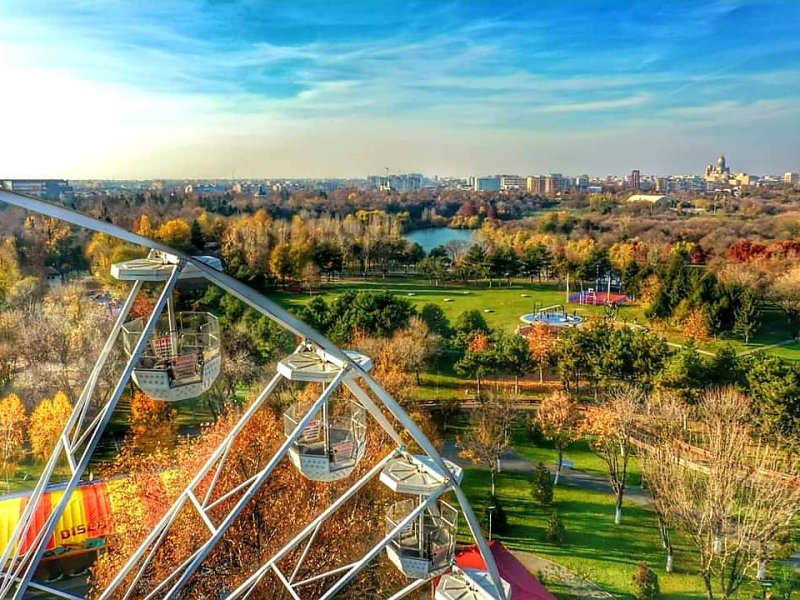The growing city: which districts of Bucharest have developed the most in recent years

By Bucharest Team
- Articles
Bucharest is a city of contrasts. As chaotic and exhausting as it can sometimes feel, it’s also full of cranes, new ideas, and constant change. Over the past five years, the capital has transformed before our eyes – not only in the central areas but especially on the outskirts, where new neighborhoods rise, old streets get redefined, and entire districts take shape.
According to real estate data, around 70% of all new homes built in Bucharest in the last five years have been concentrated in just three districts: 4, 3, and 6. Unsurprisingly, these are also the parts of the city that have attracted the most public and private investment – from infrastructure and transport to commercial and office developments.
District 4 – the south that reinvented itself
A decade ago, Bucharest’s southern area was still viewed as peripheral and underdeveloped. Today, District 4 is one of the clearest examples of rapid urban transformation.
Thousands of new apartments have been built here, and neighborhoods like Berceni, Metalurgiei, and Apărătorii Patriei have evolved into vibrant communities full of young people and families. The metro extension, newly built boulevards, and modern shopping centers have completely reshaped the district’s image.
Alongside private developments, the local administration has invested in renovated schools, restructured traffic routes, and improved public spaces.
The south is no longer the forgotten side of Bucharest – it’s one of the most dynamic areas, balancing affordability with potential.
District 3 – between tradition and modern expansion
District 3 has long been known as a “city within the city.” With its mix of established areas – Titan, Vitan, Dristor – and new developments, it has managed to modernize without losing its character.
In recent years, the local council has invested heavily in green spaces, digital infrastructure, and road maintenance. Residential projects have expanded toward the eastern edges, while older neighborhoods closer to the center have gone through a wave of renovations and upgrades.
It’s a well-balanced district: close enough to downtown to be desirable, yet still affordable for young professionals. The area has also seen the rise of business hubs and office buildings, particularly along the Unirii–Vitan–Dudești axis.
District 6 – the west on the rise
Perhaps the most striking growth in recent years has come from the west. District 6, once defined by old residential zones like Militari and Drumul Taberei, has turned into a magnet for young professionals.
Here, modern apartment complexes have multiplied, office spaces have appeared in Grozăvești and Politehnică, and the new M5 metro line has boosted mobility across the area.
The presence of universities, IT campuses, and quick access to the A1 motorway have turned the district into a dynamic hub where living, working, and leisure coexist naturally.
Investors see it as one of the city’s most promising zones in the medium term – still accessible in price, but steadily increasing in value.
The north – stable, exclusive, and close to its development peak
While the most visible growth has been in the south and west, northern Bucharest remains the city’s most prestigious and economically mature area.
Neighborhoods like Aviației, Pipera, Băneasa, and Herăstrău have reached a level of urban sophistication that’s hard to match elsewhere: high-end apartment buildings, modern office towers, luxury hotels, restaurants, and shopping centers all form part of a cohesive ecosystem.
The north has long been home to corporate headquarters, international companies, and expat communities, thanks to its proximity to the airport and well-developed road links.
However, opportunities for expansion are limited – land availability is low and prices are already among the highest in Romania. As a result, this area has become less about fast growth and more about stability and prestige.
In a sense, the north is “the capital within the capital” – refined, expensive, and self-contained. It may no longer promise spectacular returns, but it continues to guarantee long-term security.
A city expanding from the center outward
The broader trend is clear: Bucharest is growing outward, and development no longer revolves exclusively around the city center.
Most new projects now emerge in outer neighborhoods, where land is still available and infrastructure is catching up. The north remains a symbol of the premium market, but the south and west are where the real momentum is.
Over time, this shift is redrawing the city’s urban map – turning Bucharest into a more decentralized capital, where each district develops its own identity: economic, architectural, and social.
If we were to see the city as a living organism, we could say that Bucharest’s pulse now beats strongest in three areas: the active south, the balanced east, and the ambitious west.
That’s where new homes are built, where young people move, and where the rhythm of a restless, ever-evolving capital can truly be felt.
Also recommended Why are young people moving from the city center to the outskirts?






























